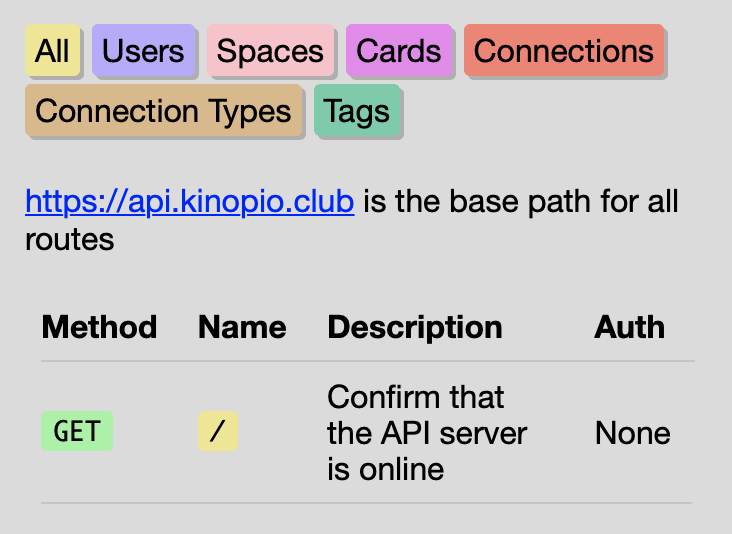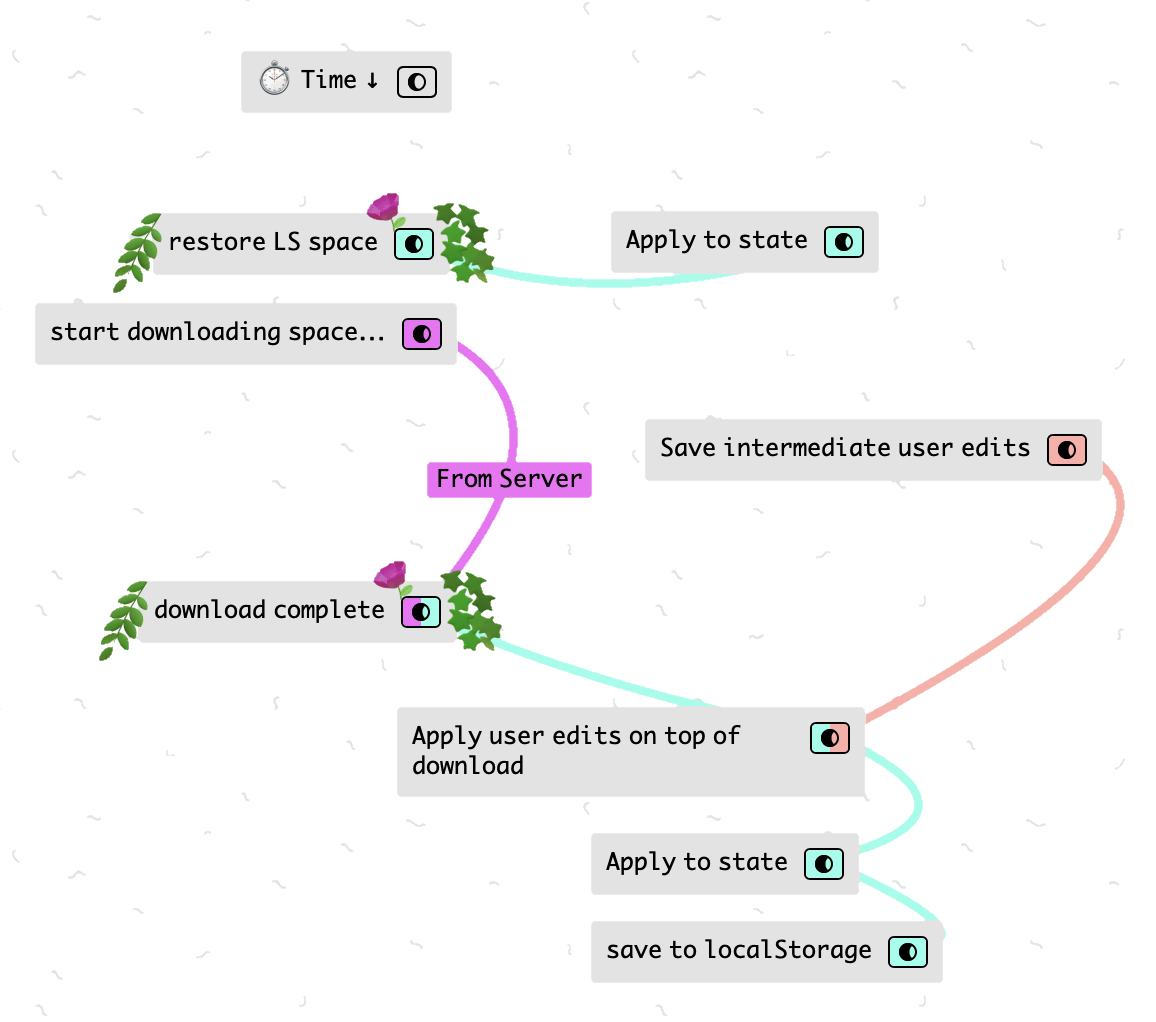You’ve probably heard, or lived, a story that goes like this…
I’m tired of technology. I’m leaving to do something real like sculpt clay, work wood, herd sheep, and grow vegetables.
But making software that runs fast, efficiently, and reliably is it’s own kind of craft, tangible in its own way. But, to do any kind of craft you have to understand the materials of your medium, how they bend, and how to work together.
Making an aircraft engine requires an understanding of the tolerances and capabilities of different metals, airflow and combustion. Not that I know anything about all that – our engine is made of state, localStorage, API, and websockets.

But First, the Two Kinopio Apps
kinopio-clientis a Vue.js app that weighs 150 KB. When you go to https://kinopio.club, it’s downloaded and run in your browser. This is the only part of Kinopio you use if you don’t have an account.kinopio-serveris a Node.js app that runs on a server out in the world. If you’re signed in, it saves your data to a database so that you can share, collaborate, and access your spaces on other devices.

Kinopio Engineering Principles

- Speed first, perfect later. You shouldn’t need to wait for server requests to complete before editing your spaces. Because fast software is the best software.
- Favor easy maintenance. To help you sleep at night choose open technologies that are widely supported and well documented.
- Building a foundation for decades. This mindset encourages me to write small, simple code that is easy to re-read in the future. If I’m adding a third-party library to Kinopio, that’s now a commitment over years so I’m motivated to really know what I’m adding – and maybe write it myself instead if that’s the smaller and faster option.
The Four Elemental Web Technologies
State
State is your current space and user data, which informs the display of elements on the page. E.g. my user.name = 'Pirijan' and my user.color = 'cyan'. Kinopio uses Vue.js/Vuex to bind data to elements on the page. So when you change your user.color, everything that references that user’s color updates.
State is not persistent though, unless it’s saved somewhere it’ll be lost the next time you refresh.
LocalStorage
Update: I later switched from
LocalStoragetoIndexedDBto improve performance and storage size. That said, I’m still using IndexedDB as a key-value storage system, via idb-keyval.
LocalStorage is 2-5 MBs of key-value data that every website gets to save on your device. Unlike cookies, localStorage data can only be accessed by the URL that created it which means it’s secure and can’t be used for user tracking and other shady shit.
Here’s a secret, by stringifying JSON objects you can save any kind of data structure to it. LocalStorage is fragile though, you can accidentally wipe it out by clearing your browser cache.
API and Database
The Kinopio API is used to GET and POST(save) data to the database so that you can edit your spaces on other devices. Getting data from servers is much slower than getting data from your localStorage, because of the round-trip and because every request needs to be privacy authorized.

Websockets
Websockets create that magical collaboration feeling by enabling a real-time stream of messages to be sent and received by a client, e.g. Pirijan moved cardId ABC123 to position {x: 100, y: 200}. These messages are relayed by the server to collaborators whose space state is updated. e.g. updating the position of the card.
Websocket connections must be actively kept alive with a ‘heartbeat’ exchange. If you go afk for a while, like to make a coffee or something, reconnecting to the stream takes a couple seconds.
Putting it All Together

| Technology | Speed | Persistent | Uses Server |
| State | Instant | No | No |
| LocalStorage | Instant | Yes | No |
| API and Database | Slow | Yes | Yes |
| Websockets | Fast, slow to connect | No | Yes |
When you load Kinopio for the first time, your state is created and saved to localStorage so it can be restored. When you update your state by editing cards or connections, localStorage is also updated. Once you sign up, updates also save to the API.
Once you start using Kinopio on other devices, the localStorage on your phone might be ahead of the one on your computer.
To be fast, Kinopio first restores state from possibly outdated localStorage. Once the latest server data is downloaded, the state is re-restored.
While the space is downloading from the server, edits you make are saved and then applied on top of the server copy.

Websockets only stream relayed updates to connected collaborators and spectators. You might be wondering, why don’t you just update the database with websockets instead of relatively slow API requests?
The problem with saving data with websockets is that they’re too fast. Authenticating that many messages per second and writing them to disk would be really inefficient. E.g. If you’re moving a card from position x: 20 to x: 420, Kinopio will use websockets to broadcast many updates during the move: moving card x to 21, moving card x to 24, moving card x to 28… potentially hundreds of messages. Or you could send a single API request after you’ve moved the card, PATCH card.x = 420.

Building fast, easy to maintain software that’ll hopefully last for decades means understanding and using the right technology for the right job. It’s its own kind of craft, in its own kind of way.
 Kinopio
Kinopio
Comments…
Please try again or email me
Or, discuss this post on Hacker News